Beautiful, matching and normal looking ears. Prosthetics for your best life await you.
Where and when you are ready!
Our team has decades of clinical experience in ear prosthetics. We will create a simple treatment plan to get your new ear prosthesis where and when it works best for you. Your ear will be meticulously restored through the perfect blend of medical art skills and cutting-edge digital scanning and 3D printing. You can opt for the easy slip-over ear prosthesis or a secure adhesive-retained prosthetic ear. We also provide bone-anchored prosthetic solutions that magnetically attach to permanent osseointegrated screws. Our practice has been a leader in osseointegration anaplastology since 1984.
Quality Matters in Silicone Prosthetics
The beauty of the artistically-created ear prosthesis is that it is not detectable as a prosthetic replacement. The unwitting observer sees it as a natural ear, because it has the same shape as the unaffected ear with the same soft fleshy look, smoothed anatomical structures, and vibrant vital coloration as the unaffected ear. This is quality in silicone ear restoration.
Microtia FAQ
Excellence in Prosthetic Ear Treatments
Parents have agonized and surgeons have debated about how best to treat microtia. One undeniable truth is that surgical ear reconstruction is unpredictable and results are often underwhelming or completely unsuccessful. Medical Art Prosthetics established ear prosthetics as an independent specialization since 1985, setting the American standard in aesthetic ear prosthetics when it is the selected option. Children with microtia and adults with untreated microtia or a poor surgical ear reconstruction can live more confident lives free of the weight of living each day with a significant ear difference.
Medical Art Prosthetics created a lasting treatment model because of specialization in clinical anaplastology as independent medical artists. This focus on silicone restoration allows us to deliver the most accurate and definitive results as a convenient practitioner network. We often deliver beautiful ear results in just days. Our clients can then live life free of second looks and stares without great expense or delay. This only happens when the ear prosthesis is so convincingly lifelike it goes unnoticed.
Ear Prosthesis Options for Microtia Patients
We use scanning and 3D printing to create ears for maximum accuracy and aesthetics. Our anaplastologists are sensitive to each individual’s style and goals.
Naturalism is accomplished by selective surface treatment: leaving sheen on select cartilaginous areas and a matte finish on adjacent helix and lobe to simulate much softer tissue covered by very fine vellus hair or “peach fuzz”.
Our Ear Prosthesis Process
Patients and families are understandably conflicted in deciding whether to accept and live with the shape of their surgically constructed ears or microtia or to have more normally shaped prosthetic ears. This is because they are told or they assume that their ear cartilage constructs or their microtia tissue must be completely surgically removed for the installation of osseointegrated implants. However, experienced anaplastologists should be consulted before any surgery is performed. There are often nuanced prosthetics options that even surgeons may not be familiar with.
If surgery for implants is selected this generally proceeds with thinning of soft tissue in the area and attachment of that skin to the bone periosteum for the installation of osseointegration fixtures and abutments. A stable magnetically attached ear prostheses might ultimately be the best long term option for many of our patients. However, patients are advised to meet with the anaplastologists before having any surgery. We routinely share many sample outcomes to maximize each patients understanding and confidence before moving forward.
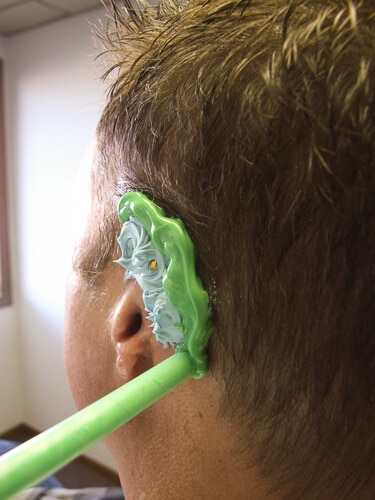







We are very happy with Billy’s new ear. Friends and family couldn’t believe how it matches his right ear perfectly. We see a confidence in Billy that we have never seen before. People do not stare anymore. This means the world to us. Billy says that he is very happy. Thanks for all you have done.
People are amazed at the work you have done, and unless someone knows I had lost my ear they would never be able to tell. Even those that do know I have a prosthetic ear cannot tell which one is real.
Thx Greg- …Very happy I made the trip (from PA)…it was well worth it…no problems with the fit…and the color adjusted perfectly…you do amazing work.


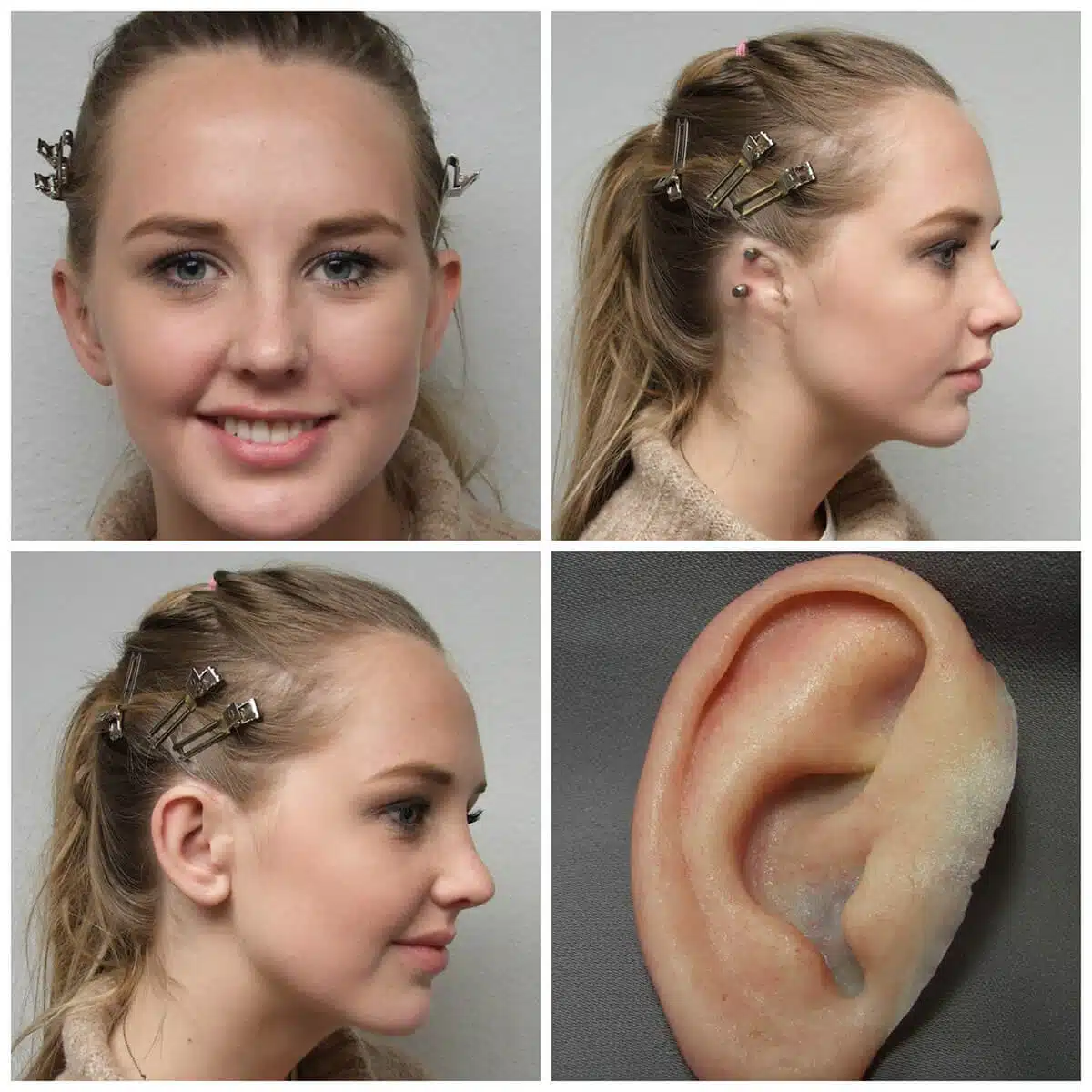
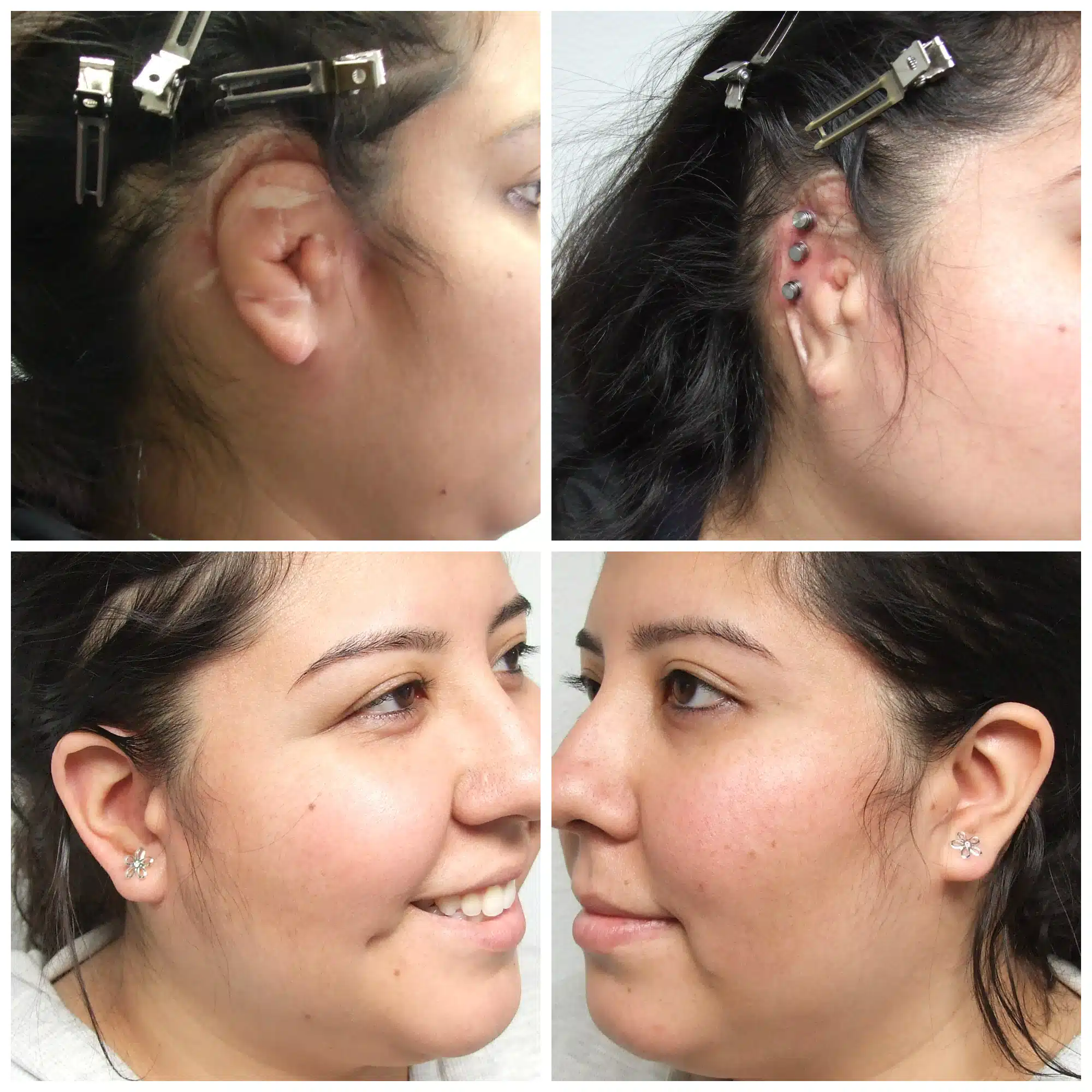
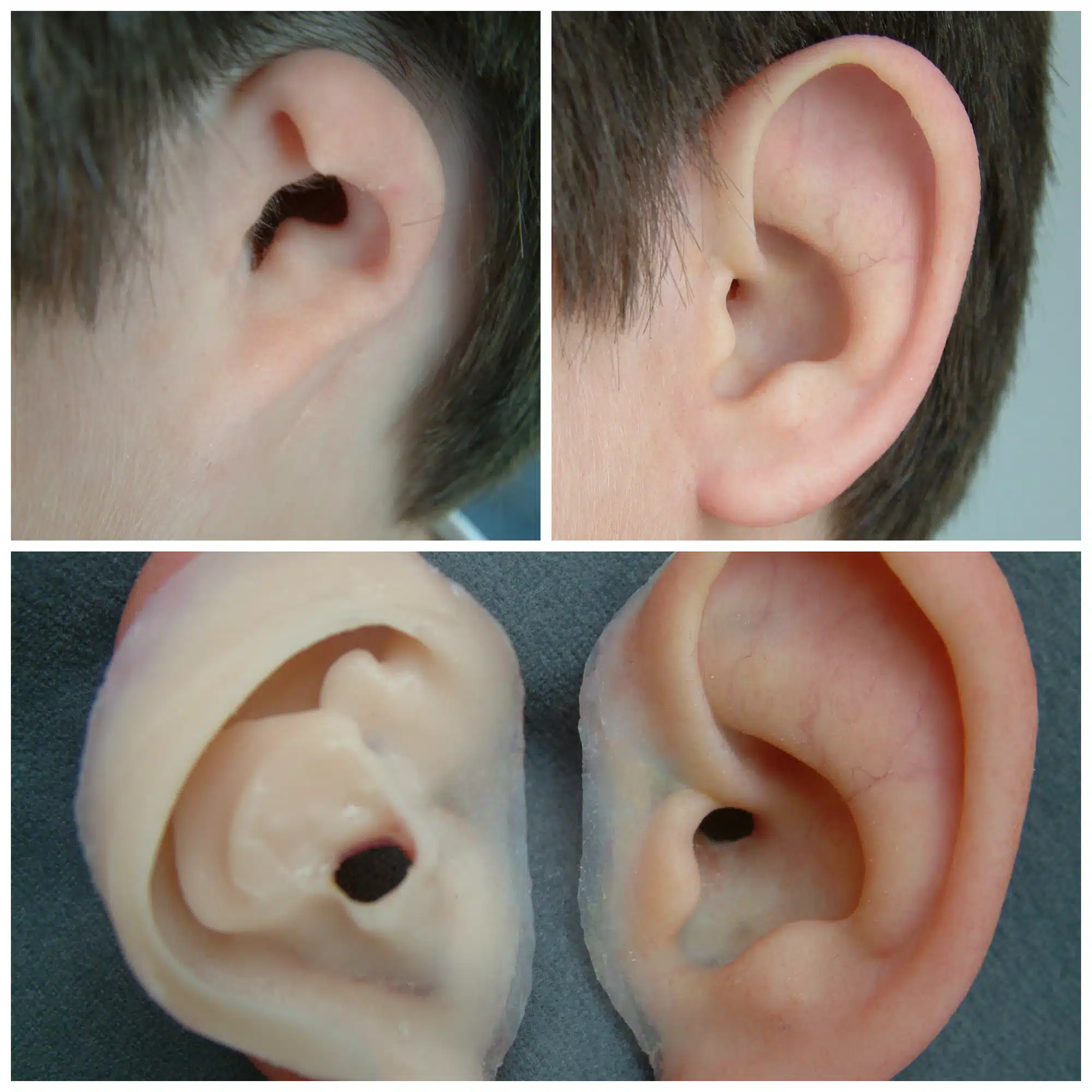
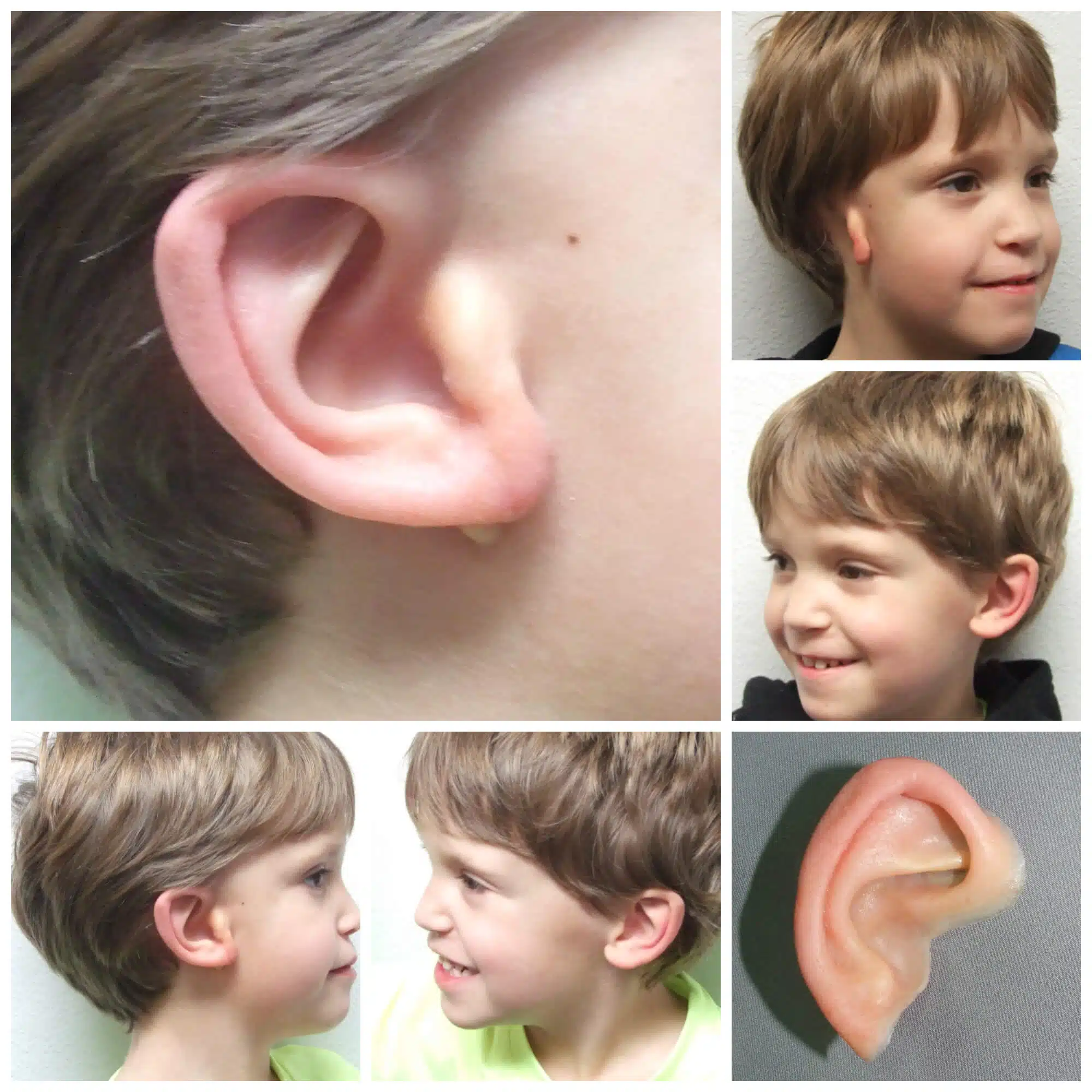
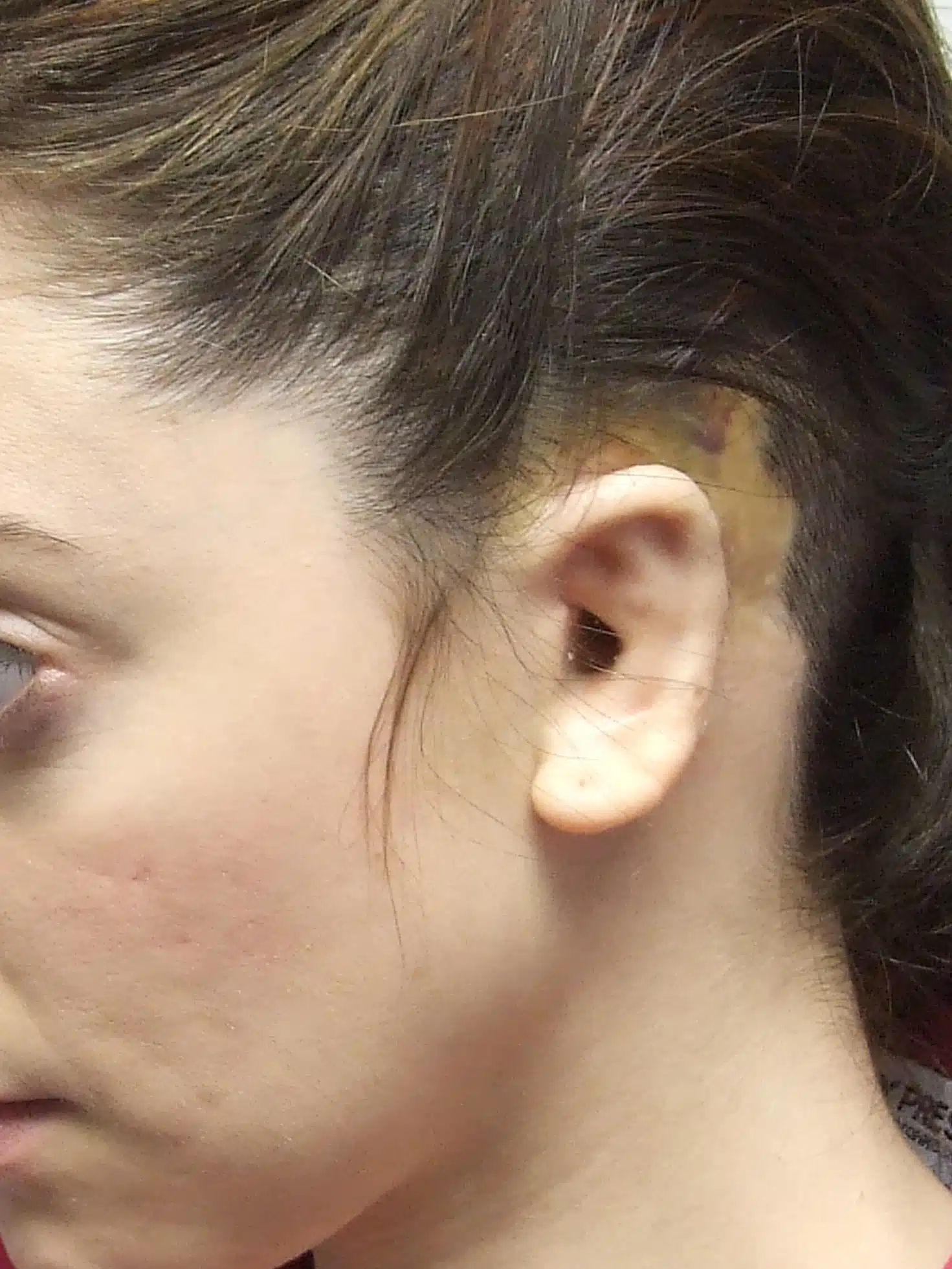
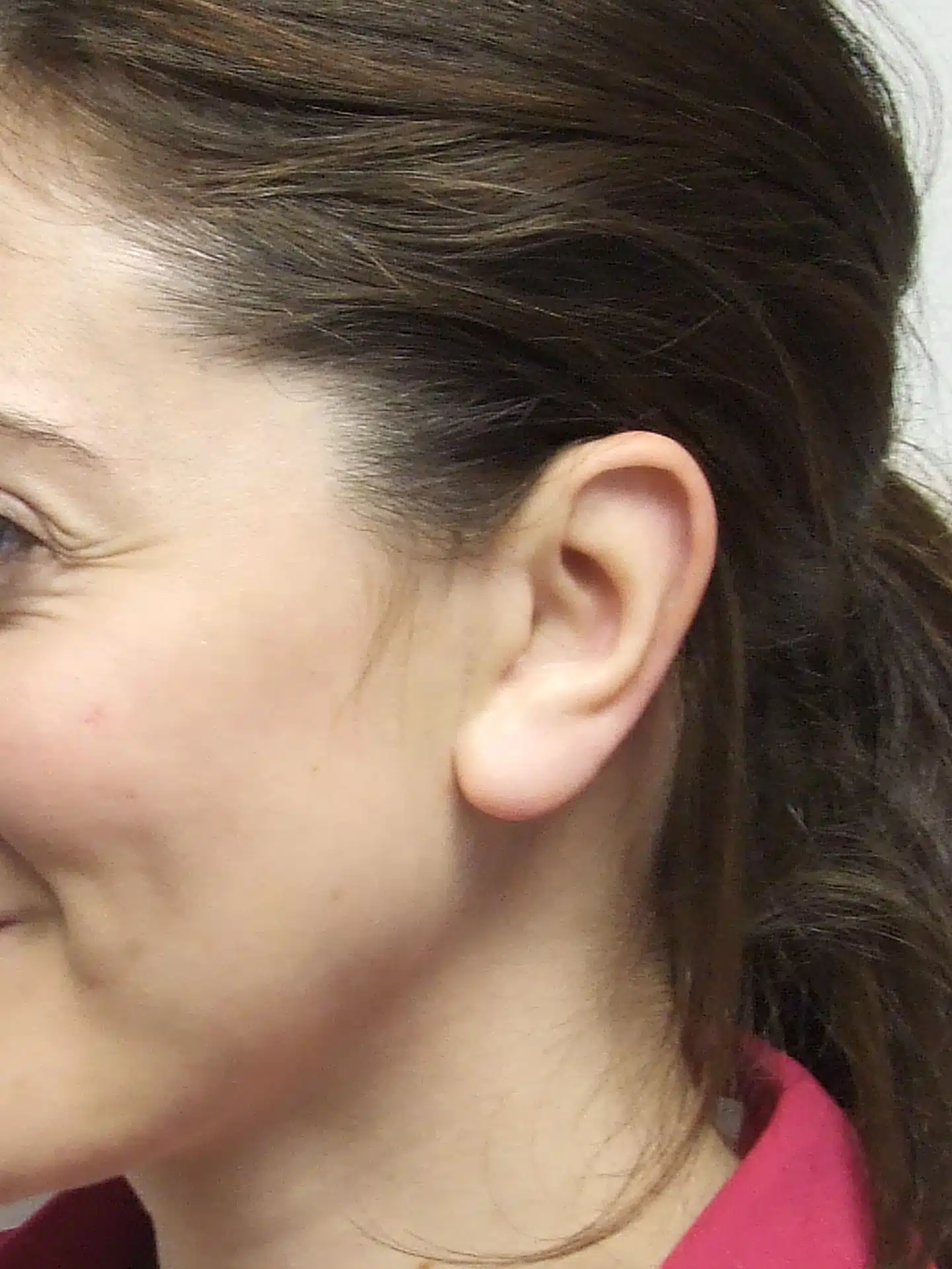
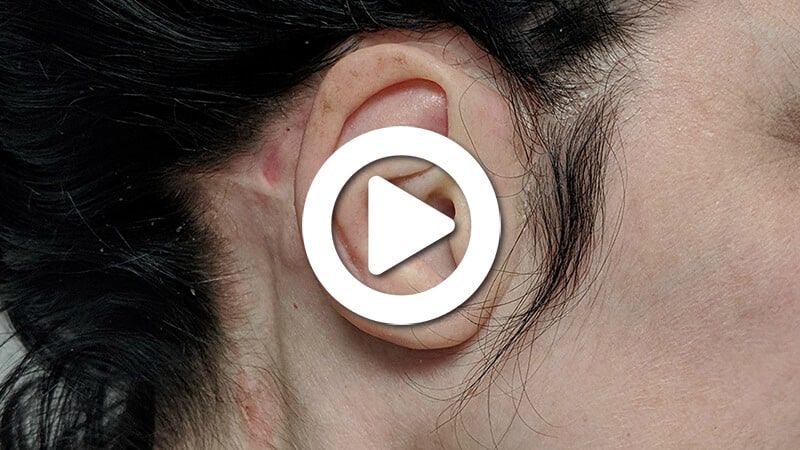
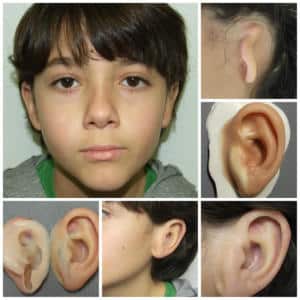 This simple prosthesis is available without any surgery. This is especially helpful to see how the prosthesis looks when shaped to fit over existing ear tissue. The adhesive-retained ear prosthesis is also appropriate as an interim measure if additional time is needed in deciding whether to undergo surgical reconstruction or to have an implant-retained prosthesis. The prosthesis in this situation might just help bolster a child’s self-confidence through pivotal school years or trying periods, especially if the family has not yet found a surgeon who can provide a prognosis for a successful surgical outcome. Many of our patients have become very comfortable with using and caring for their adhesive-retained ear prostheses.
This simple prosthesis is available without any surgery. This is especially helpful to see how the prosthesis looks when shaped to fit over existing ear tissue. The adhesive-retained ear prosthesis is also appropriate as an interim measure if additional time is needed in deciding whether to undergo surgical reconstruction or to have an implant-retained prosthesis. The prosthesis in this situation might just help bolster a child’s self-confidence through pivotal school years or trying periods, especially if the family has not yet found a surgeon who can provide a prognosis for a successful surgical outcome. Many of our patients have become very comfortable with using and caring for their adhesive-retained ear prostheses. 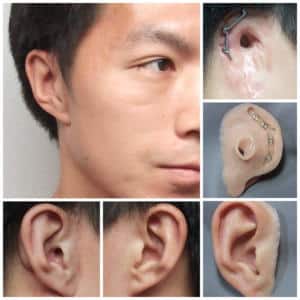 The implant-retained ear prosthesis option is now widely accepted and recommended by physicians and anaplastologists for patients who elect to wear a prosthesis as their preferred lifetime choice. This option should be explored by individuals who are not likely to receive a successful long-term surgical reconstruction of their ear or those tired of living with the look of their failed or “suboptimal†surgical reconstruction.
The implant-retained ear prosthesis option is now widely accepted and recommended by physicians and anaplastologists for patients who elect to wear a prosthesis as their preferred lifetime choice. This option should be explored by individuals who are not likely to receive a successful long-term surgical reconstruction of their ear or those tired of living with the look of their failed or “suboptimal†surgical reconstruction. 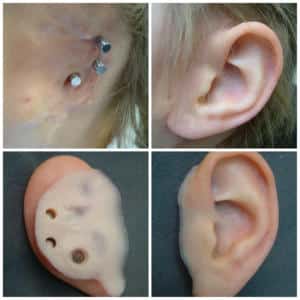 The implant-retained ear prosthesis option has been the standard of care and recommended by physicians and anaplastologists for patients who want to wear a prosthesis securely and predictably for lifetime. This option is appropriate for individuals who are not likely to receive a successful long-term surgical reconstruction of their ear. Its a great option for those tired of living with the look of their failed or “suboptimal†surgical ear reconstruction.
The implant-retained ear prosthesis option has been the standard of care and recommended by physicians and anaplastologists for patients who want to wear a prosthesis securely and predictably for lifetime. This option is appropriate for individuals who are not likely to receive a successful long-term surgical reconstruction of their ear. Its a great option for those tired of living with the look of their failed or “suboptimal†surgical ear reconstruction. 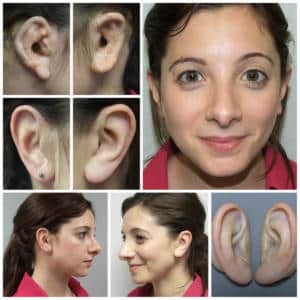 Sometimes it is possible to create a “slip-over†type prosthesis that is molded over and around an unaltered microtia ear or over a previously surgically reconstructed ear that is not acceptable in appearance to the patient or parent. Because of the intimate fit of this type prosthesis adhesive might be needed only as an extra measure of security or to help seal the edges of the prosthesis. The slip-over prosthesis provides an opportunity to give a more normal look to the affected ear. For example, improved definition of the helix (rim) of the ear is often incorporated into the prosthesis to match the unaffected side. The added helix and adjacent anatomical definition blended into the existing shape creates a more natural look when viewed from the side and a more symmetrical balanced silhouette when viewed from the front or back. Admittedly, the reliance on adhesive can be challenging and burdensome for a child and family. However, this type prosthesis can introduce the nature and benefits of the prosthesis option without having to commit to reconstructive surgery or osseointegration, both of which result in permanent scarring and sacrifice of the child’s own natural soft tissue. In other words, with the adhesive or slip-over prostheses there is no pain and no bridges have been burned.
Sometimes it is possible to create a “slip-over†type prosthesis that is molded over and around an unaltered microtia ear or over a previously surgically reconstructed ear that is not acceptable in appearance to the patient or parent. Because of the intimate fit of this type prosthesis adhesive might be needed only as an extra measure of security or to help seal the edges of the prosthesis. The slip-over prosthesis provides an opportunity to give a more normal look to the affected ear. For example, improved definition of the helix (rim) of the ear is often incorporated into the prosthesis to match the unaffected side. The added helix and adjacent anatomical definition blended into the existing shape creates a more natural look when viewed from the side and a more symmetrical balanced silhouette when viewed from the front or back. Admittedly, the reliance on adhesive can be challenging and burdensome for a child and family. However, this type prosthesis can introduce the nature and benefits of the prosthesis option without having to commit to reconstructive surgery or osseointegration, both of which result in permanent scarring and sacrifice of the child’s own natural soft tissue. In other words, with the adhesive or slip-over prostheses there is no pain and no bridges have been burned.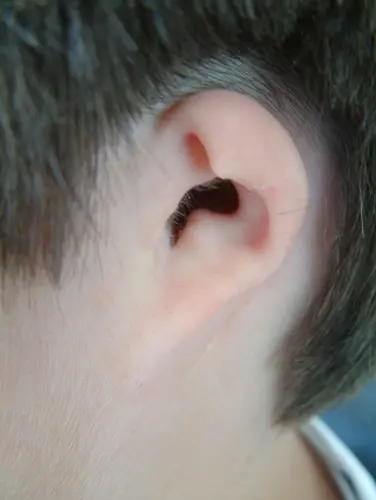
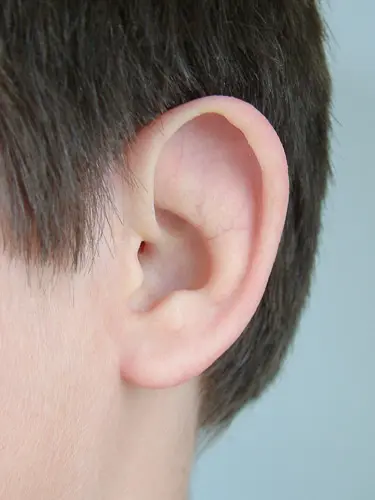

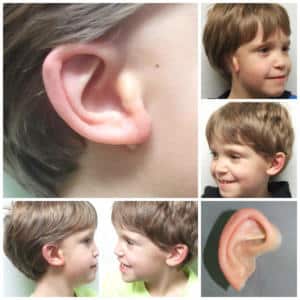 Sometimes it is possible to create a “slip-over†type prosthesis that is molded over and around an unaltered microtia ear or over a previously surgically reconstructed ear that is not acceptable in appearance to the patient or parent. Because of the intimate fit of this type prosthesis adhesive might be needed only as an extra measure of security or to help seal the edges of the prosthesis. The slip-over prosthesis provides an opportunity to give a more normal look to the affected ear. For example, improved definition of the helix (rim) of the ear is often incorporated into the prosthesis to match the unaffected side. The added helix and adjacent anatomical definition blended into the existing shape creates a more natural look when viewed from the side and a more symmetrical balanced silhouette when viewed from the front or back. Admittedly, the reliance on adhesive can be challenging and burdensome for a child and family. However, this type prosthesis can introduce the nature and benefits of the prosthesis option without having to commit to reconstructive surgery or osseointegration, both of which result in permanent scarring and sacrifice of the child’s own natural soft tissue. In other words, with the adhesive or slip-over prostheses there is no pain and no bridges have been burned.
Sometimes it is possible to create a “slip-over†type prosthesis that is molded over and around an unaltered microtia ear or over a previously surgically reconstructed ear that is not acceptable in appearance to the patient or parent. Because of the intimate fit of this type prosthesis adhesive might be needed only as an extra measure of security or to help seal the edges of the prosthesis. The slip-over prosthesis provides an opportunity to give a more normal look to the affected ear. For example, improved definition of the helix (rim) of the ear is often incorporated into the prosthesis to match the unaffected side. The added helix and adjacent anatomical definition blended into the existing shape creates a more natural look when viewed from the side and a more symmetrical balanced silhouette when viewed from the front or back. Admittedly, the reliance on adhesive can be challenging and burdensome for a child and family. However, this type prosthesis can introduce the nature and benefits of the prosthesis option without having to commit to reconstructive surgery or osseointegration, both of which result in permanent scarring and sacrifice of the child’s own natural soft tissue. In other words, with the adhesive or slip-over prostheses there is no pain and no bridges have been burned.